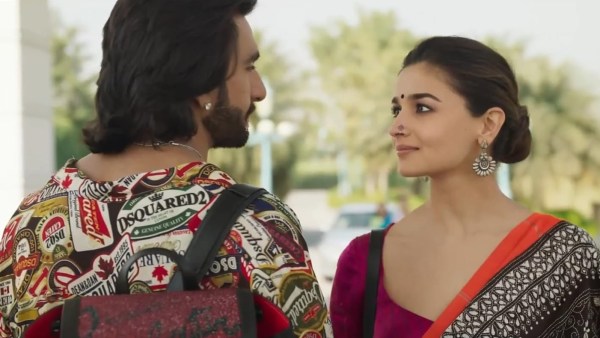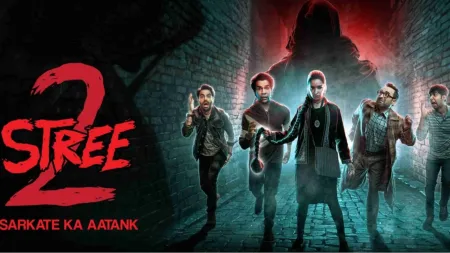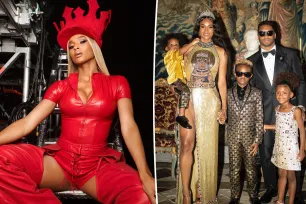As a huge Javed Akhtar fan, I was thrilled when I saw the promotional videos for Angry Young Men, a new series streaming on Prime Video India. The show looks at the life and work of Salim-Javed, two screenwriters who redefined how heroes were written in Hindi cinema, created the most long-lasting impact on pop culture with their dialogues and memorable characters, and were a major factor in catapulting Amitabh Bachchan to superstardom. The show’s title refers to the angry young man, a phrase coined to describe the angry, disgruntled male protagonists created by the duo. The ‘angry young man’ was not just a creative breakthrough, his angst was cathartic to an Indian population disillusioned by their quality of life and political events of the 70’s and 80’s. Ranjani Mazumdar aptly writes in her article ‘The Cult of the Angry Young Man’, published in 2022, “The angry man was positioned as a figure who experiences, remembers, and carries a past of deprivation that affects his psychological make-up.”
Vijay, as he was often called, became iconic for being angry about economic deprivation, financial disparity, disappointing or absent fathers, and the inherent injustice of how much a very few had while the vast population suffered in poverty. I couldn’t help but wonder, by the same definition, where were the angry young women? Or angry middle-aged and bitter old women? Where was the other half of the population that is continually side-lined, belittled, overworked but paid less, physically and emotionally abused, denied basic rights to education and independent decision-making? Why has Bollywood not done enough to explore the issues or triggers for a woman’s anger?

ALSO READ | Angry Young Men review: Salim-Javed documentary coasts on full-blown nostalgia and interesting trivia
While men can be angry and lash out at the world over a bad breakup, or turn into angry ‘animals’ because daddy didn’t give them attention, a woman’s anger in Hindi cinema is almost always linked to revenge or seeking justice for an unconscionable crime. They are allowed to feel rage when they have to avenge an unspeakable horror like rape or seek justice after they face repeated instances of abuse or discrimination. Whether it’s Ketan Mehta’s searing film Mirch Masala where Smita Patil and a group of women from her village attack a lecherous subedar played by Naseeruddin Shah to stop his harassment, Zeenat Aman in Insaf ka Tarazu, Dimple Kapadia in Zakhmi Aurat, Rekha avenging herself in Khoon Bhari Maang, Sushama Deshpande who seeks justice for her granddaughter who gets raped in the Marathi film Ajji, Rani Mukherji and Vidya Balan in No One Killed Jessica, Alia Bhatt and Shefali Shah in Darlings, or Triptii Dimri in Bulbbul; there are multiple examples of how women have to face extreme situations of pain and humiliation to express anger.
Interestingly, when she does get angry or express anger, a woman is often likened to Durga and Kali, ennobling her rage as a righteous necessity against undeniable evil, not just a regular emotion she may experience at least once a day. Vidya Balan gave us a breakthrough performance in Kahaani as a highly trained agent and widow who avenges the death of her husband and kills a man responsible for a bio-terror attack. However, instead of just allowing her to be a wounded woman who gets justice for herself and the families of all the victims, she is likened through visuals and a voiceover to Goddess Durga who Hindus believe killed an evil demon Mahishasura, and she symbolises the victory of good over evil. Unfortunately, by deifying an angry woman, we deny her the right to be human.
In most cases when a woman displays anger or is irritable she is considered annoying instead of annoyed. Ironically, anger builds inside a woman because she is never allowed to express it. She is supposed to put a lid on her feelings and appear outwardly calm for fear of being thought hysterical, hormonal, emotional, unprofessional, weak, a diva, or the eternal favourite, a b*tch. Can you imagine a woman acting like Kabir Singh after a breakup, like Pushparaj because she is poor, or like Ranbir Kapoor in Animal because she had a toxic relationship with her mother? Impossible. Instead, a woman internalises her rage, sometimes numbs herself with food like Shefali Shah’s messy and memorable scene in Dil Dhadakne Do, but mostly convinces herself that expressing her feelings will not bring about any actual change.
 Vidya Balan in Sujoy Ghosh’s Kahaani.
Vidya Balan in Sujoy Ghosh’s Kahaani.
Cinema and societal conditioning have linked women to tolerance, sacrifice, unconditional love, adjustment, and patience for so long, that there is a subconscious pressure to be in a state of constant calm and passiveness. Women are expected to tolerate more and react less, compromise as mothers, wives, and employees but never appear upset or disgruntled. In her essay ‘The Functions of Female Rage’ written on the 50th anniversary of the Roe v Wade ruling, writer Megan Nolan makes an interesting comment about how women resist expressing anger because it may impact their safety. Nolan says, “Many of us assume well-practised expressions of impassivity when being harassed, because shouting back, or even rolling our eyes, invites the possibility of physical escalation. It’s difficult to feel safe expressing anger, but it’s also unpleasant – not only for others to experience, but for the person feeling it.”
There are only a handful of instances I can remember from films I have seen in the past decade where a woman freely expressed her anger without wanting to avenge herself or anyone else. Vidya Balan confronting her family over their criticism of her job in Tumhari Sulu, Kangana Ranaut expressing anger and grief about losing out on an opportunity for a better professional life in Panga, Alia Bhatt losing her temper with Ranveer Singh’s family in Rocky Aur Rani Kii Prem Kahaani, and Vidya again confronting her father about his inconsiderate behaviour in Do and Do Pyaar.
 Ranveer Singh and Alia Bhatt in Karan Johar’s Rocky Aur Rani Kii Prem Kahaani.
Ranveer Singh and Alia Bhatt in Karan Johar’s Rocky Aur Rani Kii Prem Kahaani.
Perhaps it’s because few women play real, fully actualised characters in mainstream cinema. However, the more likely reason is that realistic complex characters for women who get angry simply because they can are rarely written in Bollywood. Forget Madonna and whore, women are usually divided into pleasant and easy to deal with, or complex, prone to emotions, and opinionated. Sadly the two are not mutually exclusive, one is just better at keeping up the appearance of not being the other.
Disclaimer: The copyright of this article belongs to the original author. Reposting this article is solely for the purpose of information dissemination and does not constitute any investment advice. If there is any infringement, please contact us immediately. We will make corrections or deletions as necessary. Thank you.







